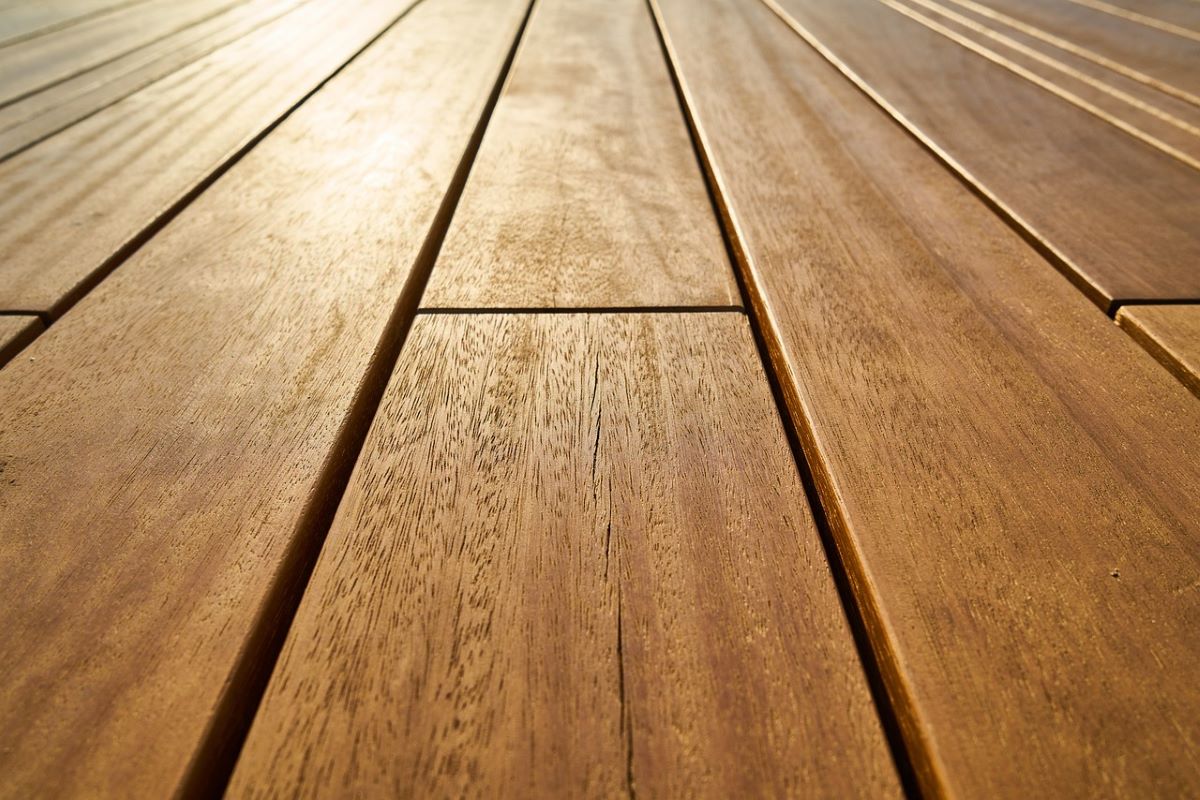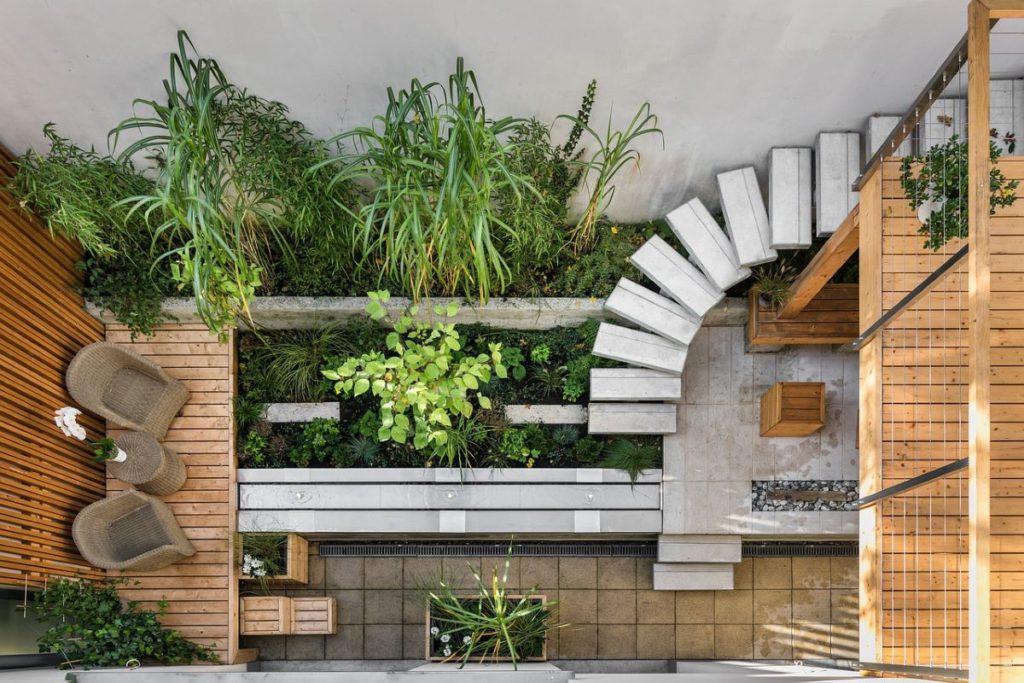Timber is a versatile and attractive material that we use in a variety of applications, from flooring and decking to cladding and ceiling systems.
A great-looking, well-finished timber frame, exposed beams or uncovered floorboards can transform a home completely if done right.
You’ll often need either a lot of sandpaper, plenty of muscle – or a good electric sander and some decent varnish or wood oil if you’re looking to make the most of your timber.
And there’s not much more to utilising the magic from this timeless material – and the budget won’t get hit too hard either.
If you’re going to use natural stains or oils, you need to use the best oil for your specific type of timber. Different types of wood need different types of oil to protect and enhance their natural beauty.
For example, you’ll want to use the best decking oil for Merbau as it’s an expensive and valuable material. A decking oil specifically formulated for the type of wood you’re using will pay dividends in the long run.
This special timber oil helps to nourish and moisturise the wood, preventing cracks and splinters, moisture, stains, and other types of damage, while improving the overall appearance of the timber.
Quality oils do a great job of protecting the wood from the elements too – the only disadvantage of oil is that it will need to be reapplied from time to time as the wood will absorb it into the porous cell structure of the timber.
 You could also consider using timber oil for indoor applications. Again, as a penetrating oil that protects and enhances the natural beauty of wood, it is particularly well-suited for use on indoor surfaces like floors, doors, and furniture.
You could also consider using timber oil for indoor applications. Again, as a penetrating oil that protects and enhances the natural beauty of wood, it is particularly well-suited for use on indoor surfaces like floors, doors, and furniture.
Timber oil is easy to apply, dries quickly, and provides a long-lasting finish – and not to mention it’s a natural organic material – so it’s not toxic to use or dangerous to kids or animals once it’s applied.
Try to use timber in creative and unexpected ways. Wood can be used in a variety of applications, and you’ll be surprised how, with some imagination, you can combine it with other materials like stone or tiling.
You could consider installing a timber ceiling to add warmth and texture to your space or use timber cladding to create a feature wall or add a rustic touch to your home.
When it comes to the outdoors, you can use timber for projects like decking or garden edging, taking advantage of the natural beauty of the wood grain and colouring.
Timber is a beautiful material that is rich in character and texture. In the right setting in the garden, it can look exceptional and add warmth and vibrancy to an otherwise drab garden design or cover an ugly wall or features like an HVAC air pump or drain.
With clever use of wood, you can make a statement out of some of the most mundane features. A trellis with climbing roses can hide a multitude of sins – and a raised herb garden made with wood can make a practical and lasting feature which will be a talking point at barbeques (especially if you use fresh herbs in your cooking).
Don’t be afraid to mix and match different timbers. Timber comes in all shapes and sizes, and you can use this to your advantage when planning new features. You might use a darker wood for your flooring and a lighter wood for your ceiling or jumble different types of timber together for a more eclectic look.
If you are using wood, there’s one thing to remember, and that’s its weight. Large beams of timber – especially hardwood like oak or Merbau – can weigh tons.
It’s worth considering using a crane or low loaders to transport and lift your timber.
Even if you have a great team of enthusiastic heavyweight friends, the safety aspects of manoeuvring enormous forms of wood around are something you need to take seriously.
This is especially important if you’re working at height – adding an extra floor to a building or constructing a framework for a roof or other major project. You really need heavy chains, winches and proper equipment on site.
The last thing you need is for you or one of your team to end up in the hospital because you’ve destroyed your back trying to lift impossibly heavy pieces of wood.
Plant hire for equipment like low loaders, cranes, winches and supports can be quite reasonable. You just have to do some research to find the best deals. Often it is cheaper to hire over a weekend than it is during workdays when professionals are looking to hire the equipment.
Another piece of equipment you will need to hire, if you don’t own one, is a decent sander. There are several types of wood sanders that are commonly used for different projects.
Belt sanders are best for removing large amounts of material quickly, such as when removing old paint or varnish.
Orbital sanders are great for smoothing and finishing wood surfaces. They are less aggressive than belt sanders and are best for fine-tuning the surface of the wood.
Drum sanders are best for sanding large flat surfaces such as floors, decks and tabletops.
Finally, there are handheld sanders – this is the kind of kit that any competent “do-it-yourself enthusiast” would have in their toolbox. These are best for sanding in tight spaces or for small projects. They are also great for sanding curves and contours.
There is a huge variety of handheld sanders on the market. With improvements in battery technology over recent years, it’s worth considering investing in a cordless sander because of the ease of use in restricted areas without a cable dangling around and getting in the way.
It depends on the scope and detail of the project as to which sander is the best fit. Depending on which stage of the job you’re at, it’s a good idea to consider the type of wood you’re working with, the condition of the surface you’re sanding, and the desired finish before choosing a sander.
If you’re still uncertain, you can always ask at your local hardware store (or try an online forum) for professional advice on the best tool for the job and the grades of sandpaper that you might need.
A great wooden feature certainly makes for a pleasing finish to a home or garden – so let your imagination run wild with timber.
